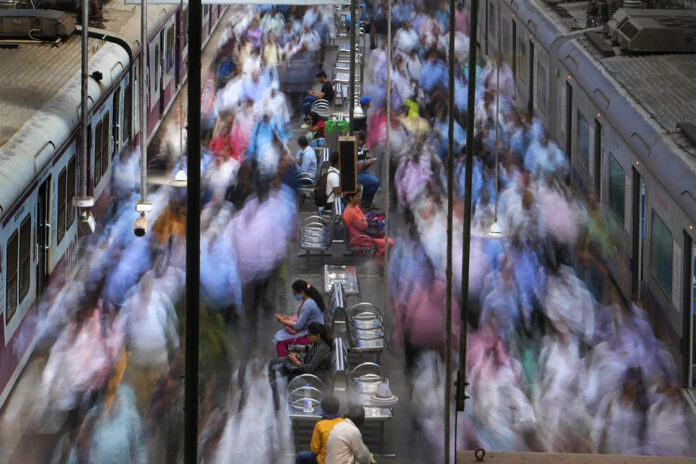“It’s time to take an interest in India,” says Serge Granger, who is finishing a book these days devoted to the links between this country… and Quebec, “two cousins” of the British Empire. “Henri Bourassa was a friend of a great nationalist there,” he recalls. Gandhi wrote about Quebec. »
The fact remains that to grasp the economic and political dynamics that shape India, it is its relations with China, its neighbour, that we must first examine. In The China-India Rivalry in the Globalization Era, edited by McGill professor T.V. Paul, scholars tackle multiple aspects of this complex relationship, which Granger calls “bittersweet.”
Beyond their border disputes, the rivals, who each have 1.4 billion inhabitants, are capable of alliances, especially on trade issues. And when two powers that bring together a third of the world’s population form a common front, their weight is immense. “We saw it at COP26, says Serge Granger. They changed the final text. Coal phase-out became phase-down…”
What is happening in India concerns us more than we think, insists Serge Granger.
Indian growth is boosted by demographics. “Every year, there are 12 million young people entering the job market,” says Serge Granger. To support its development, India still relies on coal, which is inexpensive but very polluting, and on oil, which the country buys these days at a discount in Russia.
Inspired by the Chinese, the Indians also line the Himalayas with hydroelectric dams, even if it means flooding entire villages. The report “Himalayas, the climate bomb that threatens India”, by journalist Alban Alvarez, of France 24, “reflects quite well the problem of development at all costs”, says the researcher.
The journalist transports us to the state of Uttarakhand, to meet people whose lives have been turned upside down by these projects. He underlines in passing the vulnerability of a region prone to earthquakes, where the melting of glaciers is accelerating. “India is among the countries most affected by climate change,” notes Serge Granger. The phenomenon could have serious consequences.
After all, the flow of the Ganges, which feeds 500 million people, is highly dependent on glaciers. Not to mention the monsoon that goes wrong…
India is the largest democracy in the world. The first-past-the-post electoral system, a British heritage, is very similar to ours. But in giant format, that is to say with around 900 million voters. How to take power there? There are traditional “ingredients”, summarizes Serge Granger. One: Knowing how to stand up to Pakistan and China. Two: fostering job creation. Three: marginalize ethnic minorities to reassure the Hindu base, which represents 80% of the population.
Current Prime Minister Narendra Modi, whose second term runs until 2024, applied the recipe with great care, then added a “fourth ingredient”, with “a whole series of techniques” to muzzle the opposition. These include digital intimidation as well as legal changes to make it easier to file sedition charges against opponents or limit access to foreign funds for civil society.
After a long investigation, French researcher Christophe Jaffrelot shows in Modi’s India – National-populism and ethnic democracy “the methods of Modi’s access to and maintenance of power, which raise fears about the weakening of Indian democracy,” explains Serge Granger. In French about India, Jaffrelot is a must, adds the professor.
India is not only a political and economic power, it is also the cradle of a fascinating millennial culture, with its unique codes. Even though it was officially abolished decades ago, the caste system continues to govern life there, condemning part of the population to servitude.
Despite positive discrimination measures, with positions reserved for candidates from the lower castes, they are still overrepresented among the poorest populations. Nevertheless, young people today seem less “on horseback” on the principle of caste, assesses Serge Granger. Directed by Ramin Bahrani, the film The White Tiger – based on the eponymous novel by Aravind Adiga (2008) and broadcast on Netflix (notably in French) – tells the story of Balram, a servant from a low caste who succeeds in emancipate.
The feature film paints a fair portrait of contemporary India: “We can clearly see the tensions between modernity and antiquity, cleanliness and dirt, Indianness and Americanness, explains Serge Granger, without falling into caricature. There is a beautiful intensity that also keeps us emotionally confused from start to finish. I loved this film. It reminded me of what I saw there. »


















